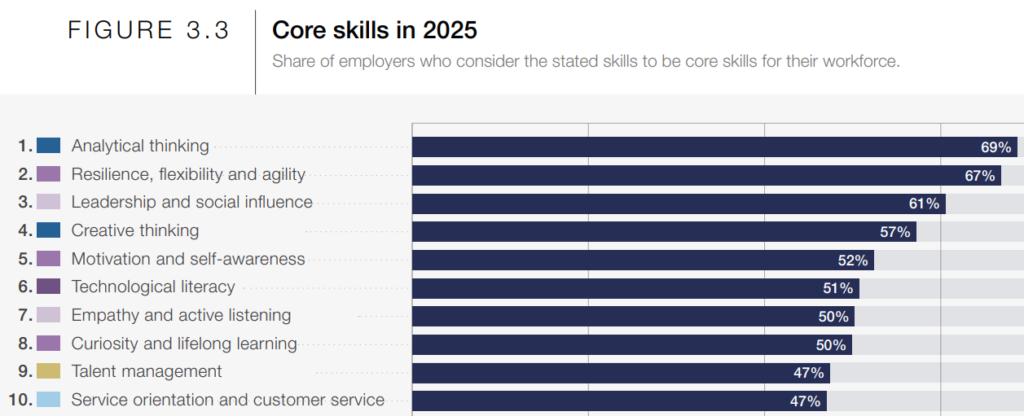
Liberty and Justice for All: Talking About Racial Equity With Kids of All Ages
With Black History Month upon us, now is a great time to have meaningful conversations with your kids about equity, racial justice, and the steps we can all take to create a more inclusive, equitable society. While these discussions can be challenging and require different approaches depending on your child’s age, they’re critical for raising empathetic, open-minded, and socially aware individuals.
In fact, studies show that children and teens who learn about racial equity and equity in general:
- Are more academically engaged
- Develop a stronger sense of self-efficacy and personal empowerment
- Perform better academically
- Graduate at higher rates
Read on for actionable tips, conversation starters, and resources to help you tackle this important topic with your family and make our children’s future world a more inclusive, equitable place.

The benefits of raising an equity-conscious child are immense, impacting their social, emotional, and academic development. Here’s how equity education supports their growth:
Reasons to Talk to Kids about Racial Equity
- Increases empathy: Learning about different perspectives helps children understand others’ experiences and emotions, a foundational skill for building meaningful relationships. A 2018 study found that children exposed to diverse cultural perspectives showed higher levels of empathy and emotional intelligence.
- Improves social intelligence: Equity-conscious kids are proven to be better equipped to navigate diverse social settings and collaborate effectively with peers. Check out this blog post that will provide you with more than a dozen ideas and resources to enhance your child’s social-emotional learning at home.
- Broadens perspectives in an increasingly globalized society: Understanding equity prepares children to thrive in multicultural environments and future workplaces.
- Improves overall satisfaction in relationships: Kids who practice fairness and inclusivity report higher satisfaction in their relationships, demonstrating “inequity aversion” as early as 16 months old.
- Correlates with greater academic and career success: Research shows that social emotional programs that include equity education are linked to a 13% improvement in academic performance. With the rise of automation and AI, more “human” skills like self-awareness, curiosity, empathy, and social influence are becoming more in demand by employers with each passing year.
Ways to Raise Equity-Conscious Kids
There are plenty of resources and tools out there to help parents of kids of all ages deepen their understanding of racial equity for all. This resource from PBS Kids provides parents with guidance on talking about racial issues with young children, while the podcast Code Switch helps teens and adults engage in conversations about race with empathy and humor. Below are a few more ideas to promote racial equity in your home.
Reflect on Your Own Beliefs and Hidden Biases
Children often model what they see, so start by examining your own assumptions and biases.
Actionable Tip: Take an implicit bias test, like Harvard’s Project Implicit, to better understand where your unconscious biases may lie. This same reflection activity could be eye-opening for high school students as well.
Provide “Windows and Mirrors” Through Books
Books can act as both “windows” into others’ experiences and “mirrors” that reflect your child’s own. Look for books geared toward their age group that reflect characters and experiences different from them and some that reflect their own culture and background. Check out this New York Times list of 14 antiracist books for kids and teens and the below featured titles:
- PreK and Lower Elementary: Last Stop on Market Street (affiliate link) by Matt de la Peña
- Upper Elementary and Middle School: New Kid (affiliate link) by Jerry Craft
- High School: The Hate U Give (affiliate link) by Angie Thomas
Actionable Tip: Try conversation starters during or after reading like, “What do you think this character felt in this situation? How would you feel if you were in their shoes?” Not only do these questions cultivate equity consciousness, but they also enhance reading comprehension, an essential skill across grade levels.
Model Empathy and Compassion
Your behavior sets the tone for your child. When you show empathy toward others, your child is more likely to do the same.
Actionable Tip: Talk openly about acts of kindness you see or do yourself. For example, “I spoke to a coworker today about something unfair they said about another coworker. I knew I needed to stand up for others.”
Examine and Diversify the Media and Content Your Family Consumes
Take a close look at the TV shows, movies, and games your kids engage with.
Actionable Tip: Use tools like Common Sense Media to find diverse and inclusive content. Try conversation starters like, “How do you think this story would be different if the main character came from another background?”

Give Back To Your Community
Volunteering and community service teach kids the value of contributing to equity and fairness in society. Check out some age-specific ideas below, or read this previous blog post with ten ideas for promoting civic responsibility with kids of all ages. Debrief your child’s takeaways after community service with questions like, “How do you think giving back helps create a fairer community for everyone?”
- PreK and Lower Elementary: Donate toys to local shelters or participate in neighborhood cleanups.
- Upper Elementary and Middle School: Volunteer at a food bank or write letters to residents in senior homes. VolunteerMatch is a great tool to pair interested volunteers of all ages with organizations seeking help.
- High School: Join advocacy groups or community initiatives focused on equity. Encourage your teen to check out TeenLife, a tool that helps find experiential learning and volunteering opportunities.
Partner with Your Kid’s Teachers and School
Children spend a lot of time at school, and educators work hard to facilitate students’ learning, making schools a key player in fostering equity consciousness. Here are a few ways you can partner with your child’s teachers and administrators to further support equitable education for your child and his or her classmates.
- Ask about the curriculum. Ask your child’s teacher how equity is taught in the classroom, and advocate for inclusive policies and curricula. Ask how diversity and inclusion are being modeled and taught at school. Find out what curriculum is being used. Offer your help so teachers get the resources they need to teach these lessons.
- Help plan cultural activities, field trips, and special events. Get involved in the classroom. Help plan learning activities and field trips that expose kids to new experiences and points of view. Volunteer to find diverse guest speakers for the classroom or school assemblies.

- Speak with administrators about school policies. Some questions to ask are: What are the school’s stated values regarding diversity and inclusion? How are those playing out in classrooms and the school? What is the demographic makeup of teachers, staff, and administrators in regards to race, ethnicity, gender, disability, class, etc. and how does that compare with the student body and surrounding community? What plans does the school or district have to diversify hiring, retention and advancement? What types of diversity and inclusion training exist for faculty and staff
- Collaborate with other parents and caregivers. If your schedule allows, join a parent-teacher group and promote conversations about diversity and inclusion. Ensure elected members understand the importance of equity education by providing them with some of the research and resources in this post.
We know when children learn empathy and understanding from working with people who are different from them, they will grow in to compassionate, well-rounded adults, and our future communities will be better.
Ed2Grow Is Here to Support You
Teaching your children about equity is one of the most impactful ways to prepare them for success in life and help create a more just world. For more tips and resources to enhance your child’s at-home learning, explore the Ed2Grow resource library and blog today!
This blog post may include paid ads and as an Amazon Affiliate, Ed2Grow earns money from qualifying purchases.




One Response